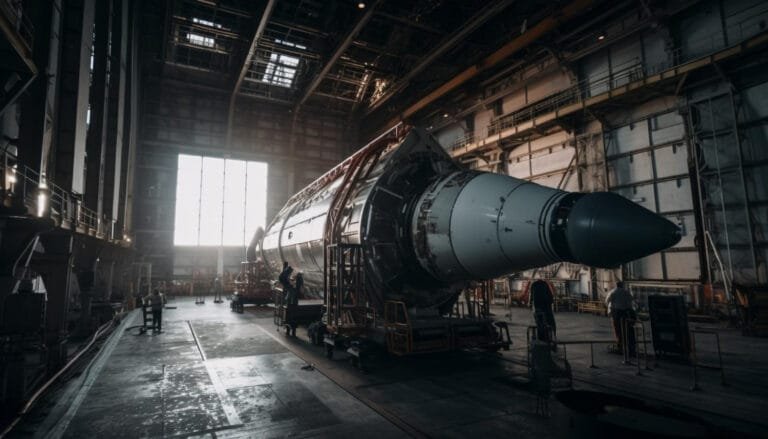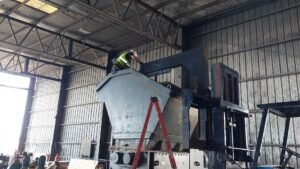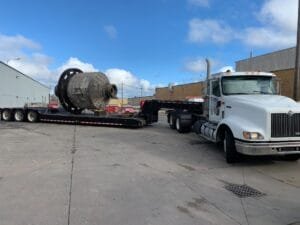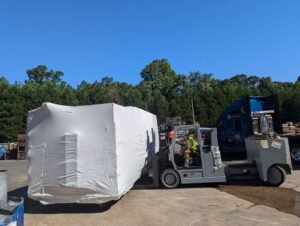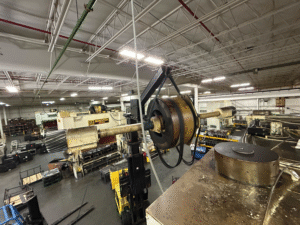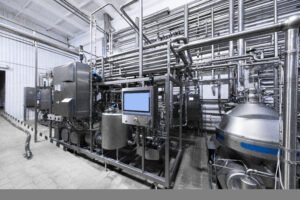In industrial settings, the relocation of heavy machinery and equipment is a complex undertaking that requires meticulous planning, expertise, and a commitment to safety. Whether it’s upgrading facilities, optimizing production layouts, or transitioning to new locations, the safe movement of heavy machinery is paramount to avoiding damage, ensuring operational continuity, and safeguarding the well-being of personnel involved. This comprehensive guide explores the essential steps, best practices, and considerations for safely moving heavy machinery and equipment.
Preliminary Planning and Assessment
Before embarking on the physical relocation of heavy machinery, a thorough and well-thought-out planning phase is essential. This section will delve into the key aspects of preliminary planning and assessment.
Conducting a Comprehensive Site Survey:
A successful move begins with a detailed site survey. This involves assessing the machinery’s current location, understanding the layout of the destination site, and identifying potential obstacles or challenges. The goal is to create a comprehensive overview that serves as the foundation for the entire relocation process.
Documentation and Inventory:
Accurate documentation and inventory management are critical. Create a detailed list of all machinery and equipment slated for relocation, including specifications, dimensions, and any special handling requirements. This documentation becomes invaluable for logistics planning, risk assessment, and as a reference during the move.
Risk Assessment and Safety Protocols:
A thorough risk assessment is imperative for anticipating and mitigating potential hazards. Identify safety protocols, conduct hazard analyses, and establish contingency plans for emergencies. This step sets the framework for a safety-first approach throughout the relocation process.
Engaging Stakeholders and Experts:
Communication is key. Engage all relevant stakeholders, including equipment operators, safety personnel, and logistics experts. By fostering collaboration and drawing on the expertise of those familiar with the machinery, a comprehensive plan can be developed that incorporates valuable insights and ensures a smooth transition.
Logistics and Transportation
The logistics and transportation phase is the bridge between planning and execution. It involves selecting the right equipment, coordinating transportation, and preparing for the physical movement of heavy machinery.
Choosing the Right Equipment for Transportation:
The selection of appropriate transportation equipment is a critical decision. Depending on the size and weight of the machinery, options may include flatbed trucks, low loaders, or specialized heavy-duty transport vehicles. Each option comes with its own set of considerations, such as road permits and route planning.
Route Planning and Permits:
Meticulous route planning is essential to avoid obstacles and ensure a smooth journey. Obtain the necessary permits for transporting oversized loads, and work closely with transportation authorities to comply with regulations. Route surveys may be conducted to identify potential challenges and plan for detours if needed.
Securing and Rigging:
Properly securing and rigging heavy machinery is fundamental to preventing damage during transportation. Utilize specialized rigging equipment, such as chains, straps, and cranes, to secure machinery in place. The goal is to minimize movement and vibration during transit.
Considerations for Specialized Equipment:
Some machinery may require specialized handling due to its size, weight, or fragility. This section explores considerations for moving specialized equipment, including the use of custom crating, climate-controlled transportation, and collaboration with manufacturers or specialized rigging experts.
Preparing Machinery for Transport
Once logistics are in place, the focus shifts to the meticulous preparation of the machinery for transport. This involves disassembly, packaging, and ensuring that all components are ready for a secure and efficient relocation.
Disassembly and Component Labeling:
Disassembling machinery is a delicate task that requires precision and attention to detail. Each component should be carefully labeled, and a comprehensive inventory of parts created. This ensures a systematic and efficient reassembly process at the destination.
Cleaning and Preservation:
Prior to transport, machinery should undergo a thorough cleaning process. This not only maintains the integrity of the equipment but also aids in the identification of any pre-existing damage. Additionally, consider applying protective coatings or preservatives to prevent corrosion during transit.
Documentation of Procedures:
Develop detailed procedures for disassembly, packaging, and reassembly. This documentation serves as a guide for the personnel involved and can be referenced in case of any uncertainties during the relocation process. Standardized procedures contribute to a consistent and organized move.
Quality Assurance and Inspection:
Implement a rigorous quality assurance process before machinery is loaded for transport. Conduct comprehensive inspections, verify that all components are securely packaged, and ensure that any vulnerable parts are adequately protected. This step is crucial for preventing damage and ensuring the equipment’s operational integrity upon arrival.
Execution and Post-Move Procedures
With meticulous planning, logistics, and preparation in place, the execution phase commences. This section explores the actual move and the subsequent procedures required to ensure a seamless transition.
On-Site Coordination:
Effective on-site coordination is paramount during the execution phase. This involves overseeing the loading of machinery onto transport vehicles, ensuring secure fastening, and conducting final checks before departure. Communication between logistics coordinators, equipment operators, and transportation personnel is key to a smooth transition.
In-Transit Monitoring:
Implement systems for real-time monitoring of machinery during transit. This can include GPS tracking, vibration sensors, and temperature monitoring for sensitive equipment. In-transit monitoring provides visibility into the condition of the machinery and allows for immediate response to any unforeseen challenges.
Unloading and Reassembly:
The unloading process requires the same level of precision as the initial loading. Coordination between transportation personnel and on-site teams is crucial to ensure a smooth transition from transport vehicles to the destination site. Reassembly procedures should follow the documented guidelines, with careful attention to detail.
Post-Move Inspection and Testing:
Once machinery is reassembled, conduct a thorough post-move inspection. Test the equipment to ensure that it functions as intended and address any issues promptly. This step is crucial for identifying and rectifying any damage that may have occurred during the relocation process.
Conclusion:
In conclusion, safely moving heavy machinery and equipment is a multifaceted process that demands meticulous planning, coordination, and adherence to safety protocols. By embracing a comprehensive approach that encompasses preliminary planning, logistics, preparation, execution, and post-move procedures, businesses can navigate the challenges of machinery relocation with confidence. This guide aims to provide a roadmap for industry professionals, emphasizing the importance of safety, collaboration, and attention to detail in achieving successful and secure heavy machinery moves.
